Postcard from Columbus the first
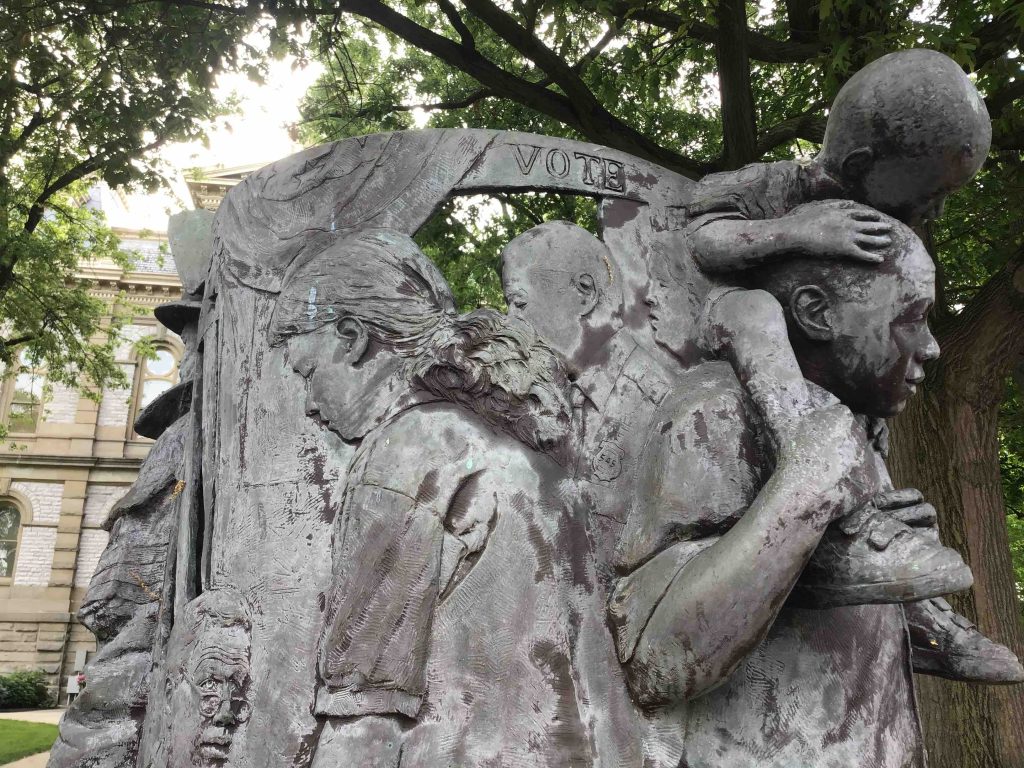
John Wyver writes: We are on the road! Having left Chicago, we drove to Fort Wayne and Sidney, Ohio (day one), on to Columbus, Ohio (day two) and then to Columbus, Indiana (day three). Not that it’s been entirely great, although it very much mostly has. First off, we had such a struggle picking up our Avis rental Toyota Rav4 at O’Hare; then there were problems with the hired satnav, which failed to charge in-car. So by mid-afternoon, deep in rural Ohio, we were relying on a paper map that I’d brought with me as a kind of totemic throwback.
Tramps like us…
Then our first stop proved to be not exactly a pilgrimage destination. I was intrigued to see the performing arts centre that Louis Kahn designed for Fort Wayne. Kahn was the visionary creator of the Salk Institute, La Jolla, 1959-65 and the Yale Center for British Art, 1969-74, two of the most remarkable spaces I’ve ever explored. Indeed, I spent a day filming at the Salk for the series Artland USA, 2006, that I produced with Seb Grant for Gallery HD, and I recall that as six or so hours that taught me so much about buildings and space and light.

I’d love to say that the Arts United Center, 1973 in Fort Wayne was similarly revelatory, but while it has an oddball entrance facade (above), it’s definitely minor-league Kahn. There were meant to be another nine buildings on a campus here but, you know, financing. Maybe the best part of our brief stop was an encounter with Helmholtz, 1985, by Mark de Suvero, an artist whose monumental sculptures I always enjoy when I bump into them, but who otherwise I know next-to-nothing about.
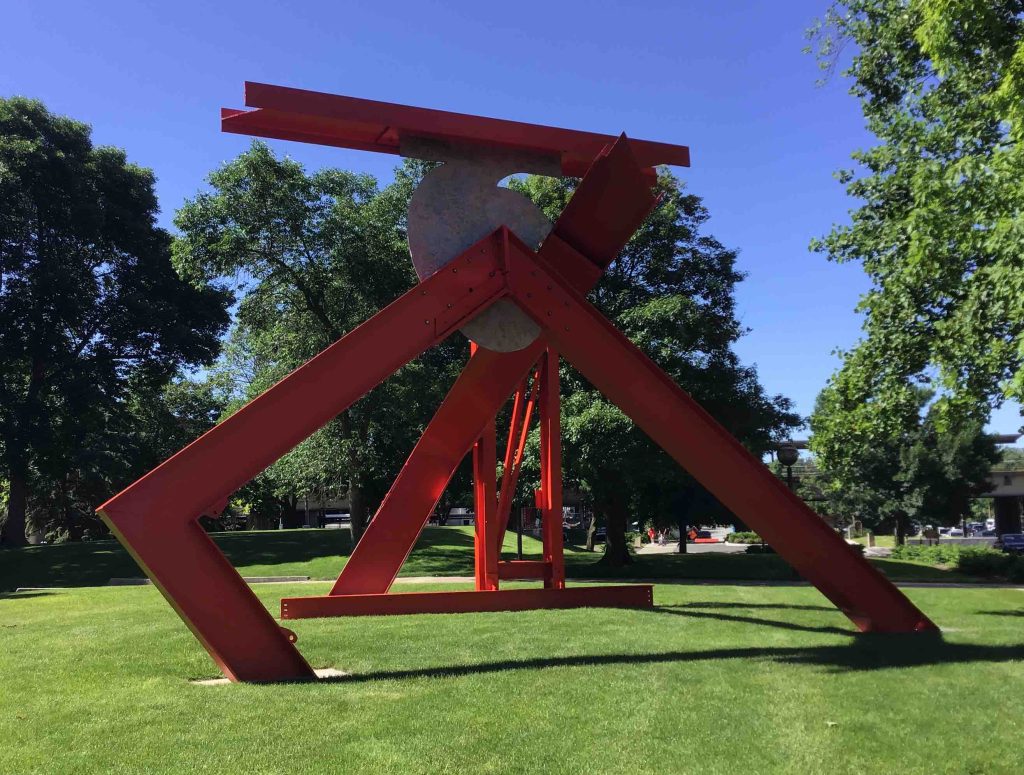
By six or so in the evening, despite frequent blasts of The Boss, we were tired and a touch car-sick, and we needed Sidney, Ohio, to lift our spirits. As it definitely did, specifically with the modest building we had come all this way to see: The Peoples Federal Savings and Loan Association, designed by Lous Sullivan and built 1917-18. My, this is a wonder, and it looked especially glorious in the late afternoon sun.
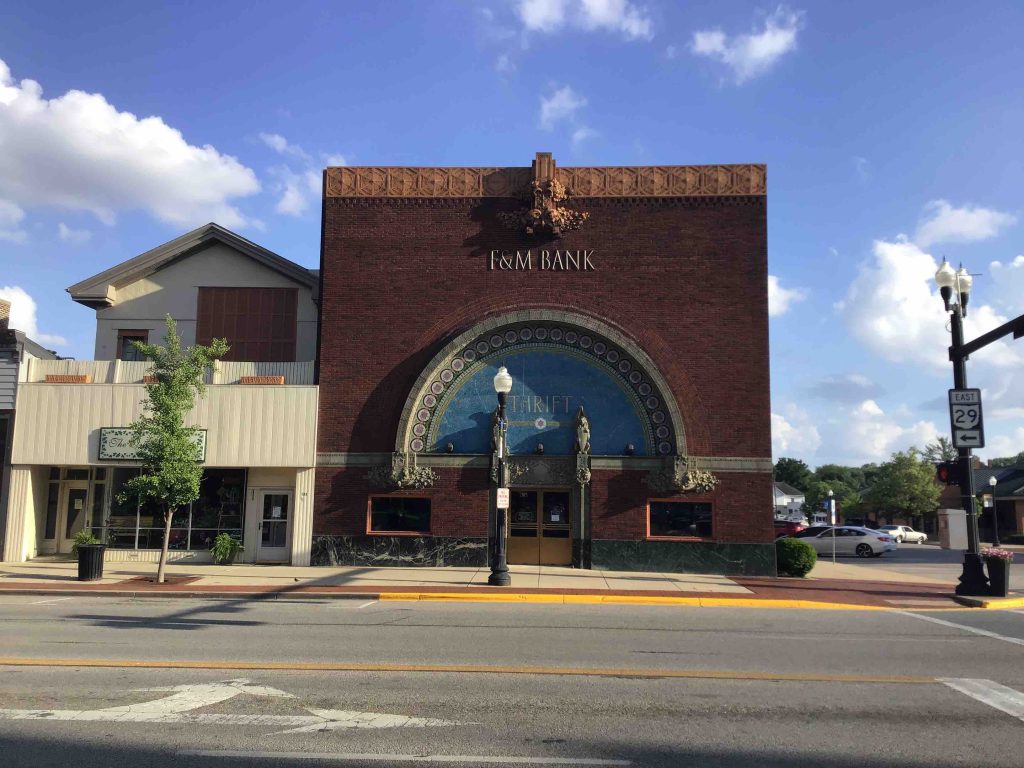

This is one of the eight banks in small mid-west towns that Sullivan designed towards the end of his illustrious career when major commissions were hard to come by (know the feeling, Louis). They are collectively called the “jewel box” banks because of their rich ornamentation, and the wonders of this one include the golden “Thrift” on the mosaic facade and the mottled green and blue stained glass windows along the side.

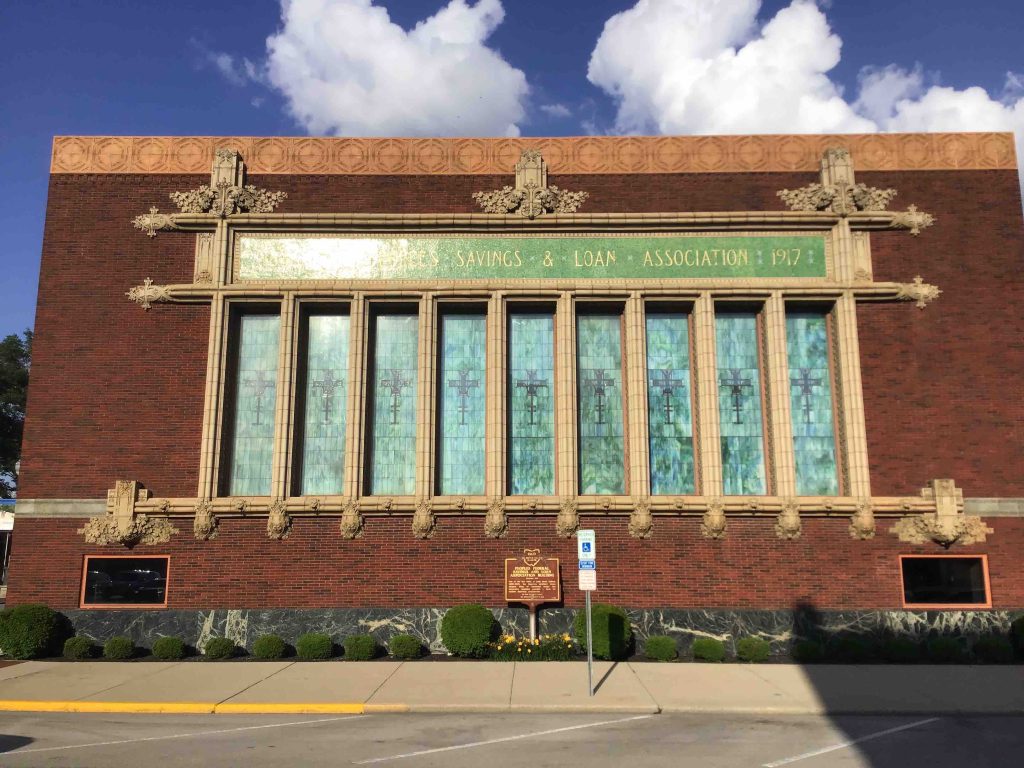
The “jewel boxes” were one of the inspirations for this slightly bonkers road trip, and my hope is that we’ll collect three more along the way. In any case, I was so happy to encounter this one. Given that it’s a “savings and loan” it all felt a bit Bedford Falls, except that it was in bright Technicolor.
The building continues to live as a working bank, but as it was a weekend we couldn’t access the interior. Next morning, which was Memorial Day Sunday, we spent another hour wandering around Sidney, where I collected this handful of images.

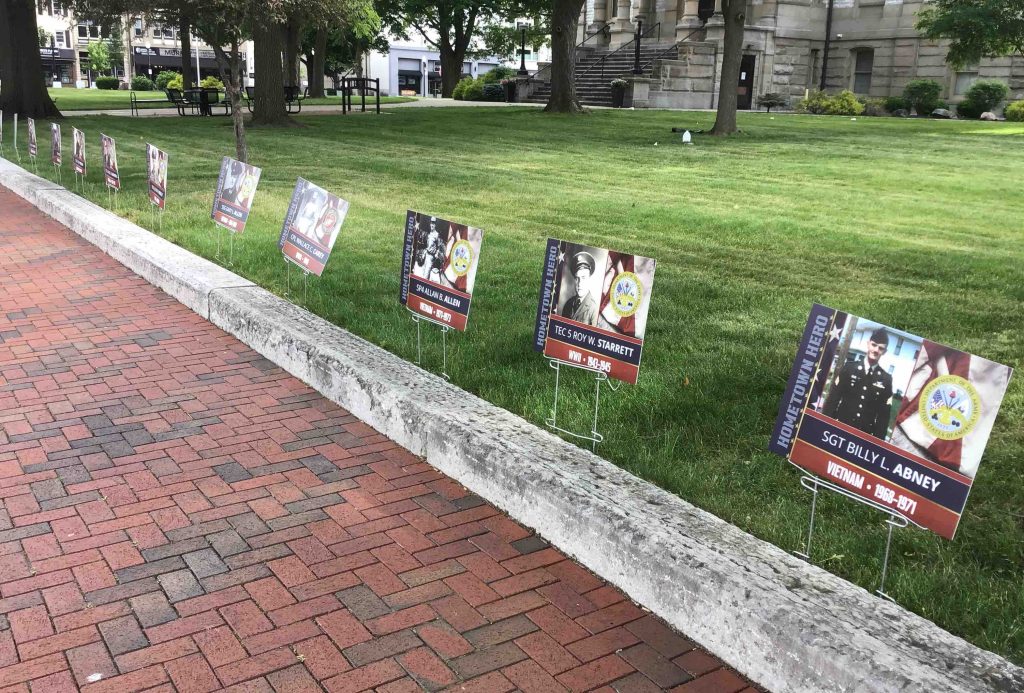


(My Hopper-y facade above pleased me.)
There’s better days shining through
Our second day on the road comprised just a 90-minute hop into Columbus, Ohio. This is the urban environment called Columbus that most people have heard of, and we were there mostly for the Columbus Museum of Art. Here’s Paul Feeley’s Karnak (Sculpture Court), 1966, fabricated 1968/2015, outside the main entrance.
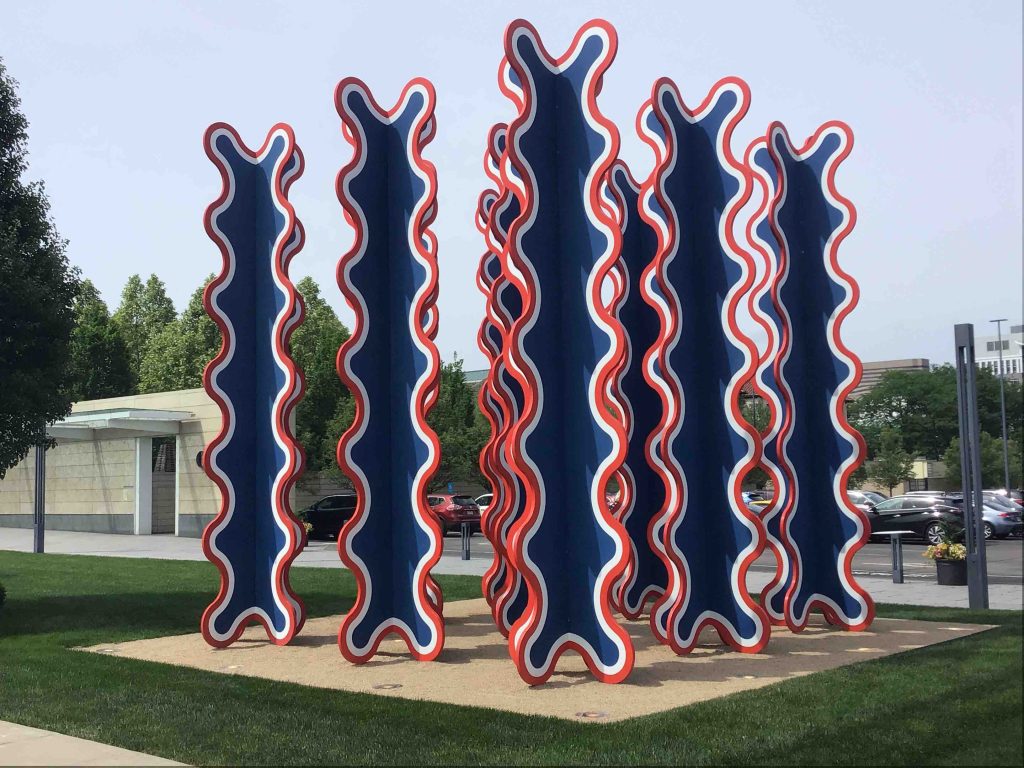
I suspect, or at least hope, that we’ll find more institutions like the splendid Columbus Museum of Art. Here’s a very fine gallery with a select collection including more than a few blazing masterpieces…
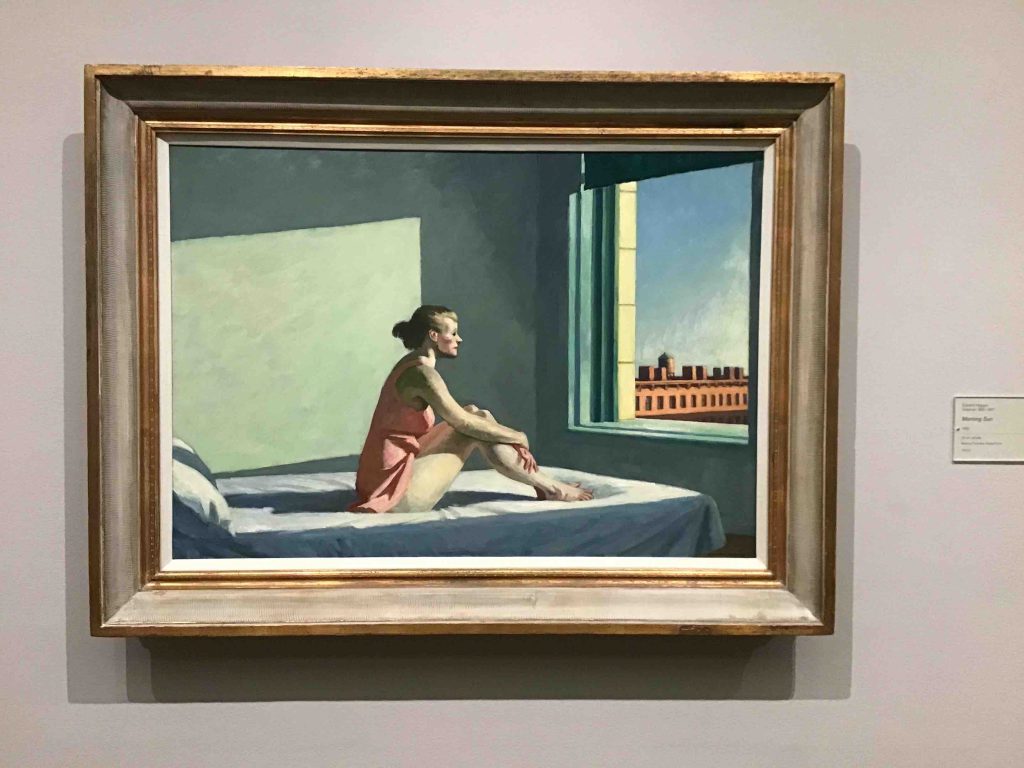
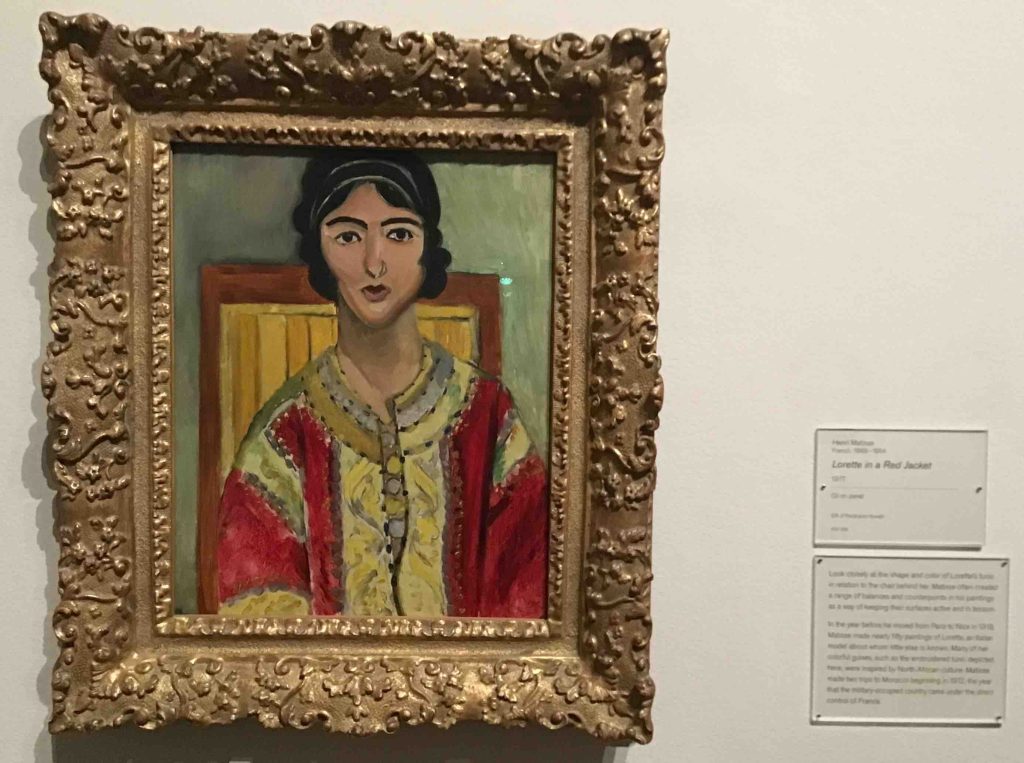
Then there are groups of works with a local connection, most especially here paintings by local boy George Bellows (1882-1925), whose Riverfront No.1, 1915, is especially compelling.

There are oddities too, like Norman Rockwell’s remarkable yet smuttily distasteful Morning After the Wedding, 1957.
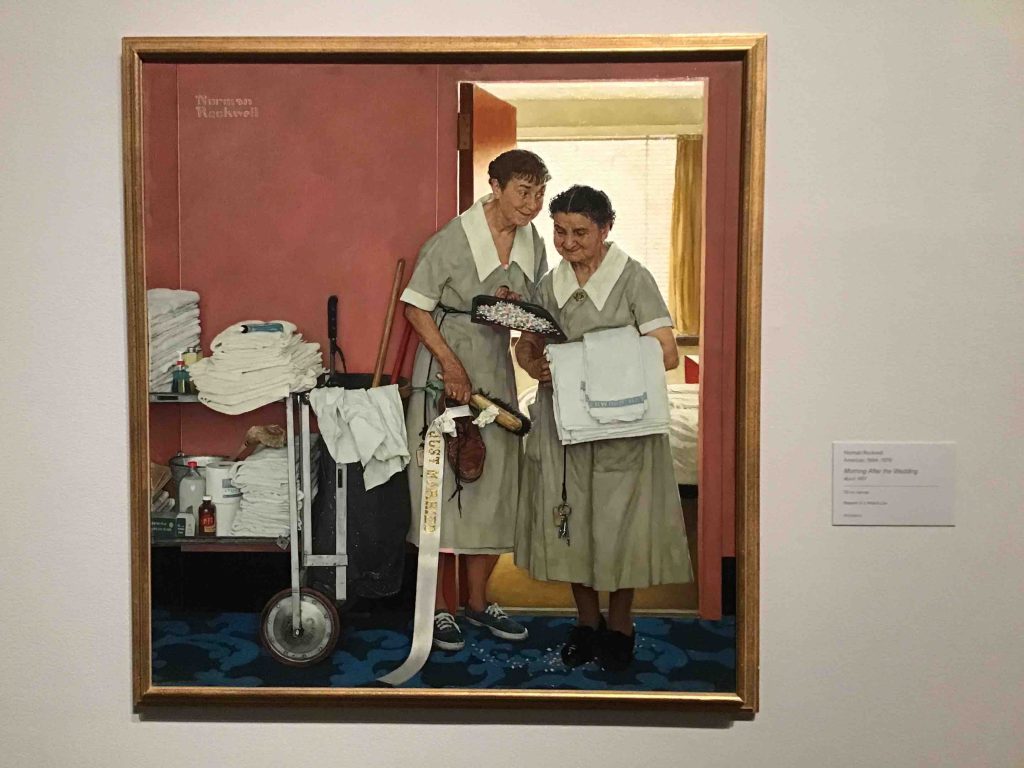
And there are delightful surprises, such as Telephone, 1916, by Morton Livingston Schaumburg, an artist who I had never heard of, but whose unique combination of cubism and futurism applied to an instrument of modern technology I completely fell in love with.
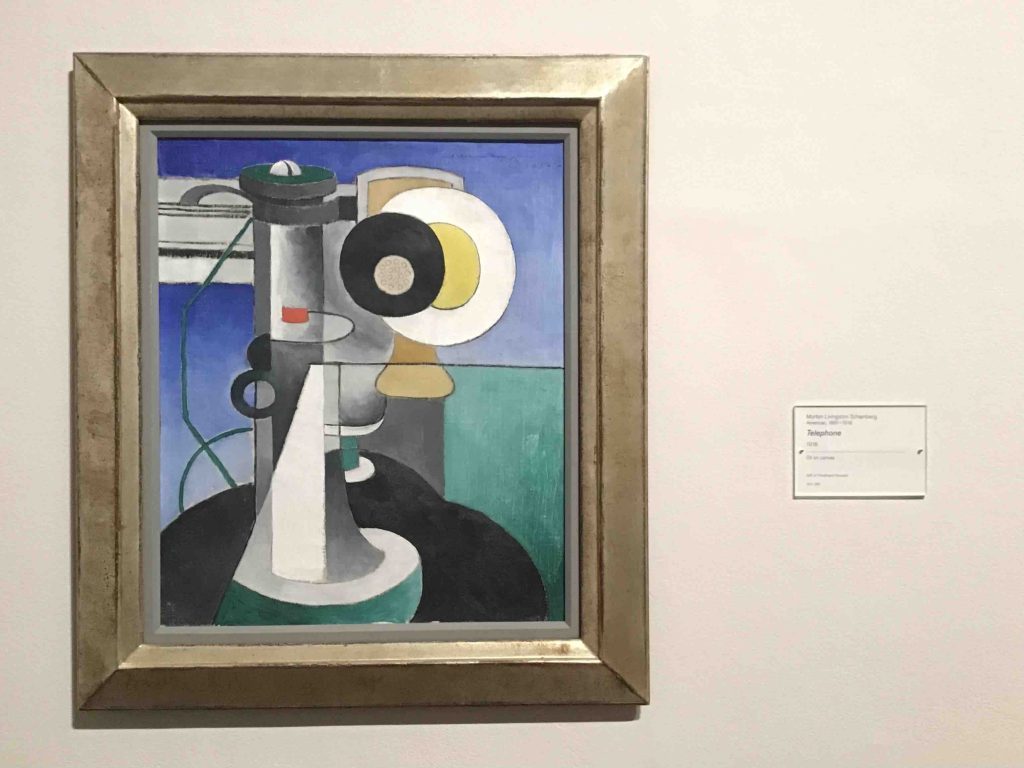
The collection (and I haven’t even hinted at the very strong contemporary display) is one aspect of what makes the Columbus Museum of Art so good, but there’s more to it than that. Everyone was so welcoming – and as it was Sunday there was free entry for all. The labelling is intelligent, socially progressive and with no hint of jargon. And then one of the dozen or so galleries of the permanent collection is dedicated to this…
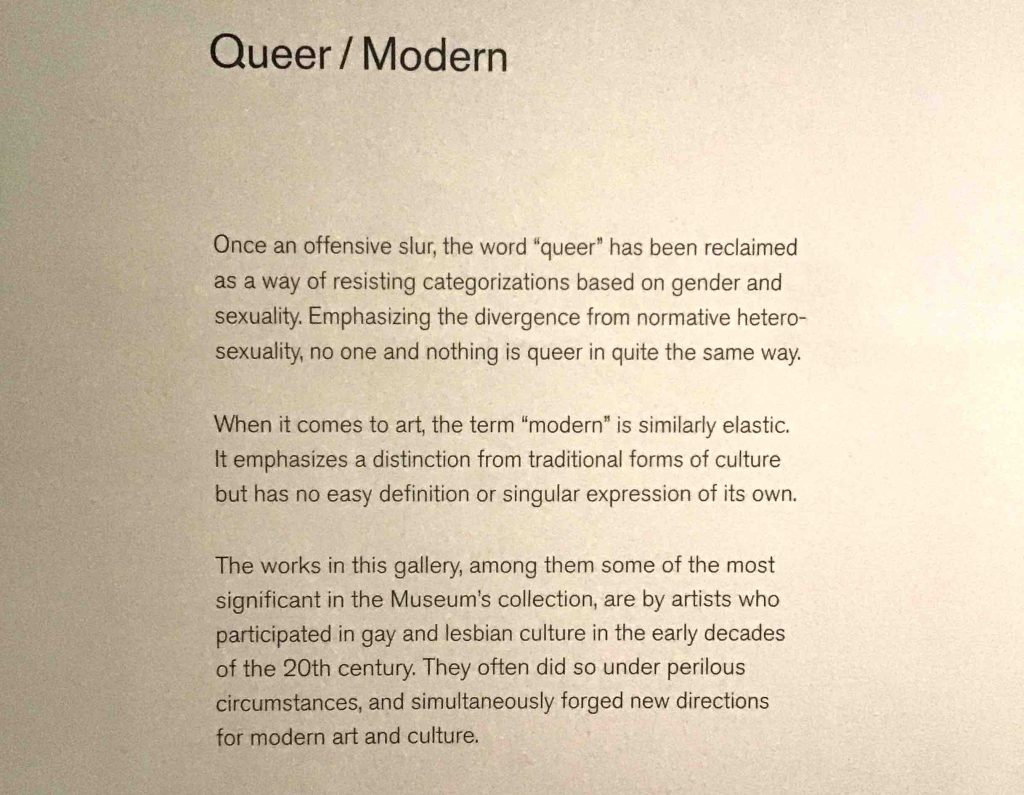
I can’t think of another major collection that has a dedicated display like this, drawing together works by Marsden Hartley, Paul Cadmus, Charles Demuth (on the wall below), Berenice Abbott and others.

There are more riches still, but finally here are two installations commissioned by the museum, which like many such works are hard indeed to photograph. The first is Alison Saar’s Nocturne Navigator, 1998, a towering figure in copper, wood and neon commemorating the legacy of the Underground Railroad. The label informed me that there were some 20 documented Underground Railroad stations in central Ohio, including several in Columbus and surrounding areas. ‘Illuminated from within, the figure’s billowing skirt,’ the label details, ’shows the constellation of stars – especially the Big Dipper, also called the Drinking Gourd – that guided freedom seekers on their nightime journey.’
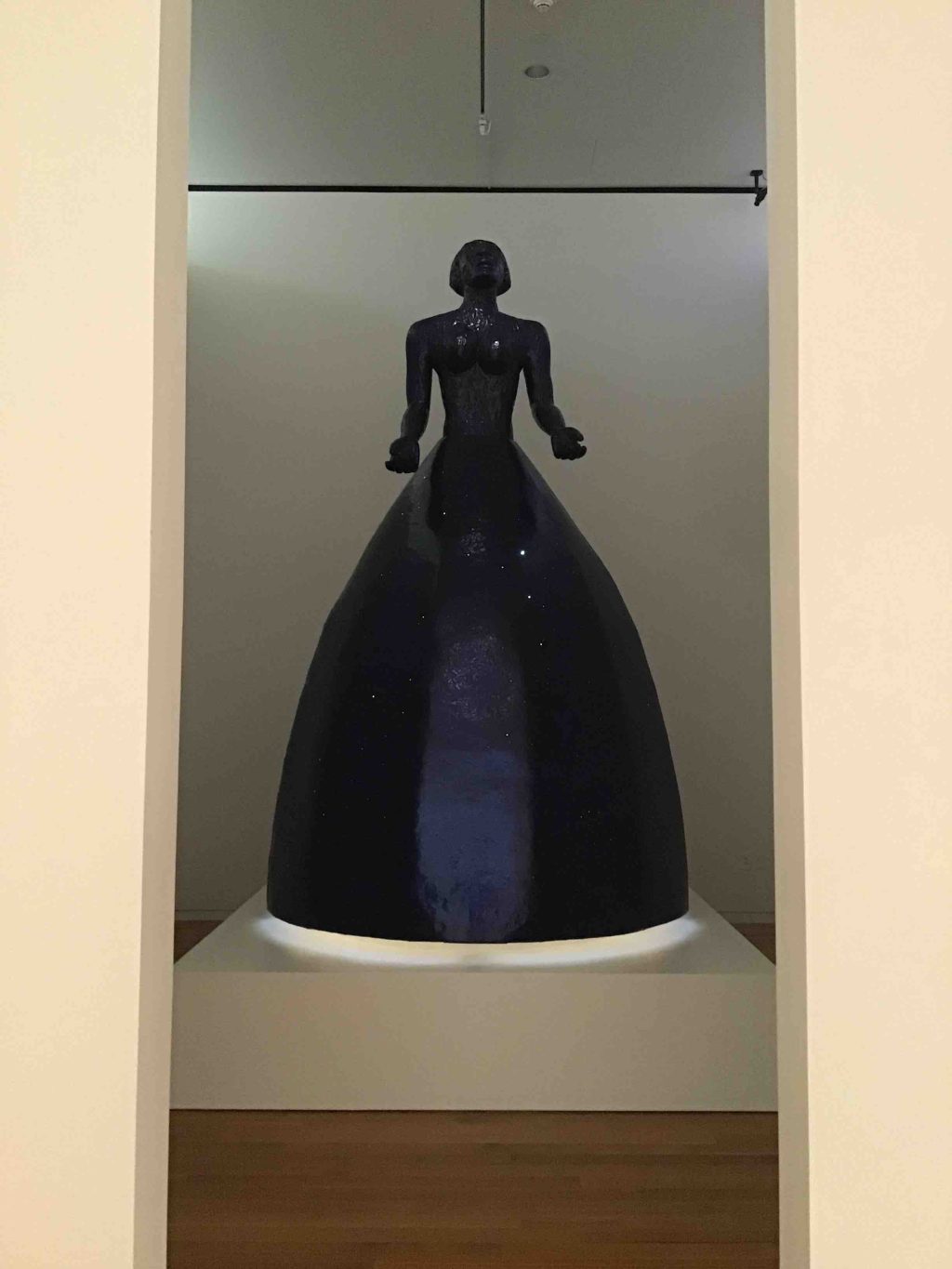
Incidentally, if you’ve not read Colson Whitehead’s 2016 historical / speculative fiction book The Underground Railroad, which rightly won the Pulitzer Prize, do so – it’s marvellous. Barry Jackson’s screen adaptation is pretty great too.
In another dedicated space, there’s Mel Chin’s Spirit, 1994, an uncannily balanced cask on a rope of tallgrass. A native plant, tallgrass was once key to the prairie ecosystem, but by 1930 was decimated by agricultural and industrial settlement. Barrels were fundamental for the process of European settlement in North America, Like the very best art, Spirit is wondrous, unsettling, provocative, sensuous (the smell of the tallgrass is important) and beautiful.
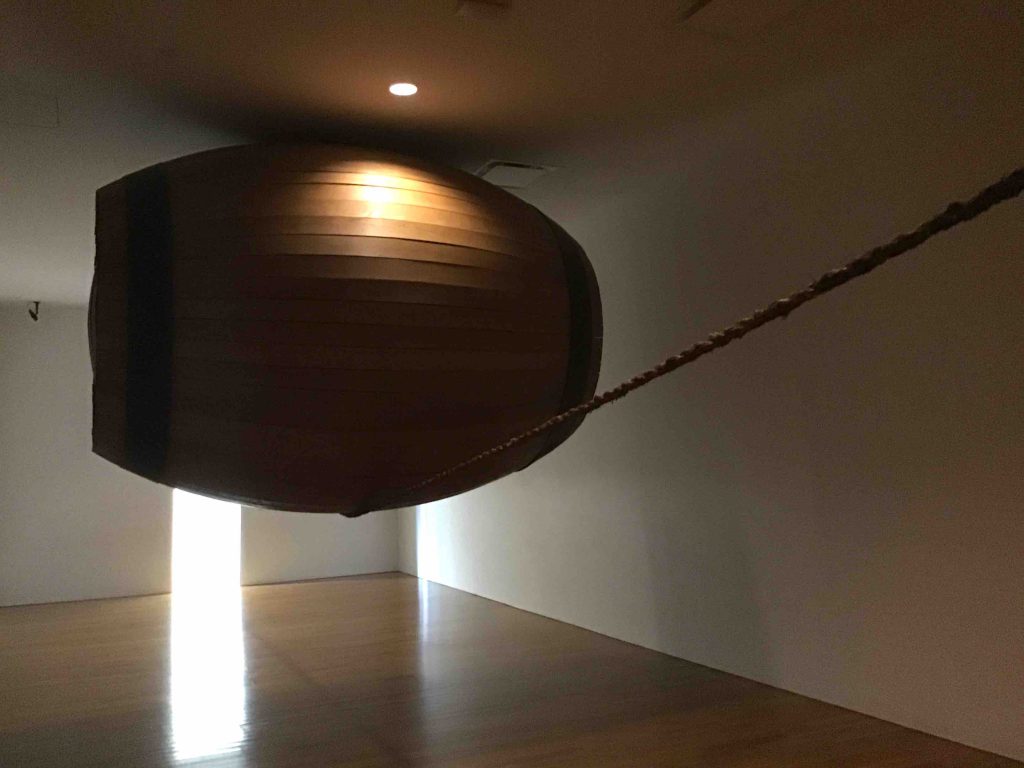
And all the miles in between
The third day on the road featured a lot of driving through rural areas as well as freeways. One billboard assured us that “Hell is Real”, others appeared to disguise anti-abortion messages behind offers of confidential advice, while still more showed us a variety of local accident and injury lawyers, although we were puzzled as to why they needed to have their mostly unremarkable faces featured twenty feet high. One one back country road we passed a TRUMP 2020 sign, partly overgrown with grasses; otherwise, so far we’ve seen only a few political posters.
Around midday on day 3 we rolled into Columbus, Indiana, which is another notable town with this name – but one that almost no-one has heard of, at least among the Americans who we talked to. This Columbus deserves its own Postcard, which will follow, so for the moment just enjoy this very fine facade of the town’s deserted theatre (which has a fascinating history – click on the link).

I never knew there were so many Columbuses. The only ones that I knew of before today were Georgia and Ohio. Biut Wikipedia lists twenty different ones in America – Wisconsin has two!